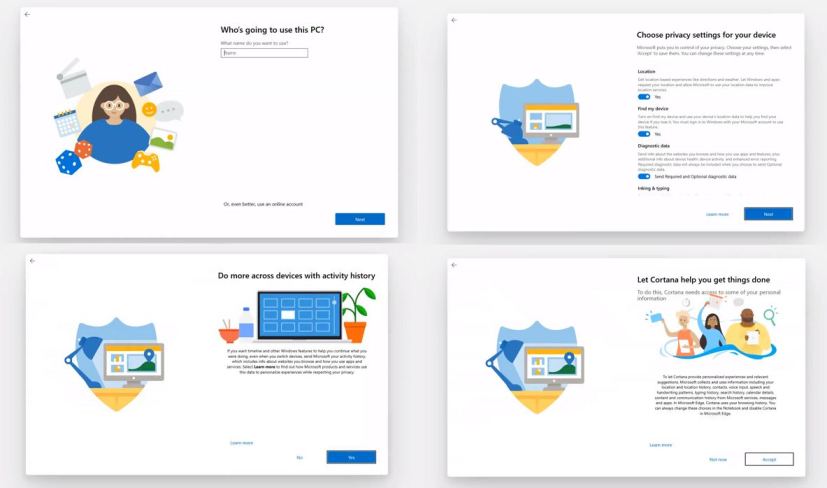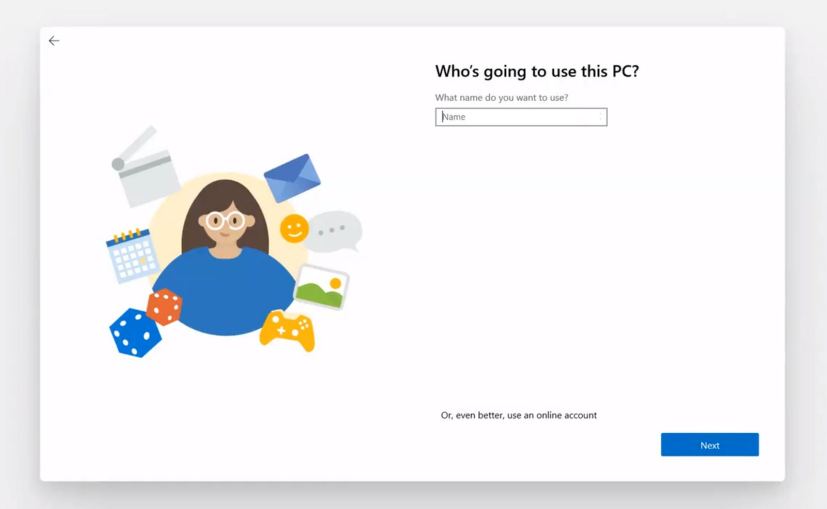Starting with build 20231 (available through the Dev Channel), Windows 10 is introducing a new out-of-box experience (OOBE). This is the experience you usually go through to complete the initial setup of the operating system with a new account, privacy settings, and custom preferences when setting a new device or after a clean installation.
The new user interface isn’t entirely new, it was first integrated into Windows 10X, but now it appears to be making its way to the desktop version of Windows 10, since @thebookisclosed on Twitter figured out a way to enable the new experience to give us an early look.
The short video posted on Twitter (and on Reddit) shows that the OOBE is moving away from the blue and dark colors in favor of white and gray colors with a more intuitive and friendly interface.
The experience is now a white window with rounded corners, instead of a stretch full screen interface, indicating that this will look much better in high resolution displays.

Aside from the new visuals, the setup process looks similar to the old experience. You get the option to create an account (in this case a local account), choose your privacy settings, enable Cortana, etc. Also, through the process, as you move between the stages, you’ll see new animations related to the setting that makes it a more friendly experience.
Windows 10X variant of Windows 10 is intended to create another eXpression of Windows 10 with new features and technologies, such as faster updates and upgrade, better security with containers for legacy desktops applications, and completely modular operating system. It was originally developed for dual-screen devices, but later on Microsoft shifted the focus to make it an experience for single-screen devices, and as a result, some of the features will also come to the traditional desktop version of Windows 10, which is what we’re seeing with the new OOBE experience in build 20231.
Alongside porting new features to the traditional version of Windows 10, Microsoft is planning to release a version of Windows 10X at some point in 2021, but it’ll be an operating system with support for single-screen devices primarily for businesses and education and without support for legacy (win32) apps running in containers. Also, the company still has intentions to make Windows 10X an operating system for dual-screen devices, but that will come at a later time.

